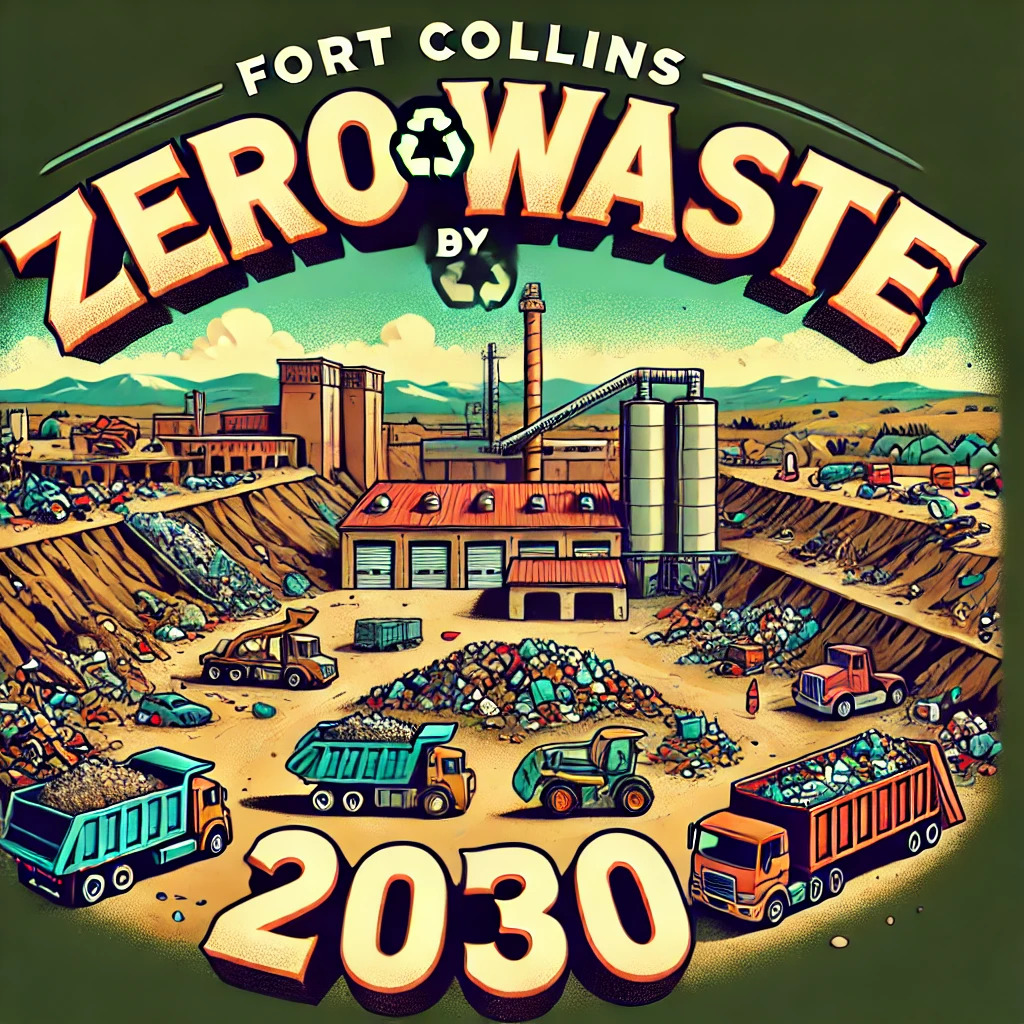Alright, Fort Collins—we’ve got a big goal on our hands. The city has committed to hitting zero waste by 2030, meaning nothing—zero, nada, zilch—goes into landfills. Everything would need to be reused, recycled, or composted.
Sounds great in theory, right? But let’s be real—we’re nowhere near that yet.
One of the biggest challenges? Construction and demolition (C&D) waste. That stuff takes up a massive chunk of landfill space, and if we don’t figure out how to deal with it, we can forget about hitting that zero-waste goal.
So, what’s the plan? Well, the county is trying to build a Construction & Demolition (C&D) Processing Facility to keep more of that waste out of the landfill. The problem? It’s expensive, and they’re looking for financial help to make it happen.
The Landfill Situation: Clock Is Ticking
Our current landfill is expiring at the end of this year. The county is planning to open a new landfill in early 2026.

What’s the Deal with the C&D Facility?
The proposed C&D facility would:
✅ Process up to 130,000 tons of material per year
✅ Keep 40% (or more) of construction waste out of landfills
✅ Save landfill space and create new recycling opportunities
The problem? It’s expensive.
The price tag sits between $8.7M and $10.5M. Larimer County is asking the state for $5M in grant money, and they’re looking to local partners—including Fort Collins—to help cover the rest. The city has $1.5M in unallocated climate tax funds that could go toward it, but that’s still short of what’s needed. The thought from the councilmembers that if we are at least willing to committ to helping that other players could come in and it’d be more likely that we get the $5M grant.
Are We Actually Getting to Zero Waste by 2030?
Look, the city has been making moves—composting, recycling, and waste reduction programs have all been ramping up. But let’s break down what we’re up against:
1. Funding Is a Big Problem
- The C&D facility isn’t cheap, and neither are the other needed projects, like composting sites and waste transfer stations.
- Even if we build the right infrastructure, maintaining and expanding it will take consistent investment.
2. Policies Need to Be Stronger
- Right now, most waste diversion efforts are voluntary.
- There will be a combination of policy and behavioral to get us there.
3. People Gotta Get On Board
- Even with good programs, if people don’t use them, they won’t work.
- More education, incentives, and community buy-in are needed to make zero waste a reality.
4. We Still Rely Heavily on Landfills
- As much as we all want to cut landfill use, we don’t have enough alternatives right now.
- Without enough places to take food waste, yard waste, and C&D materials, landfill dependency is still a major problem.
So… Can We Actually Do This?
Hitting zero waste by 2030 is a stretch, but that doesn’t mean we shouldn’t try.
Here’s what could help get us closer:
✔️ Getting full funding for the C&D facility
✔️ Expanding composting options
✔️ Stronger waste diversion policies
✔️ Better public awareness and participation
The reality is, 2030 is just around the corner. We don’t have much time to make the necessary changes, and if we don’t act fast, we won’t get there.
What do you think? Is zero waste by 2030 realistic, or should we be looking at a longer timeline? Drop your thoughts in the comments!

